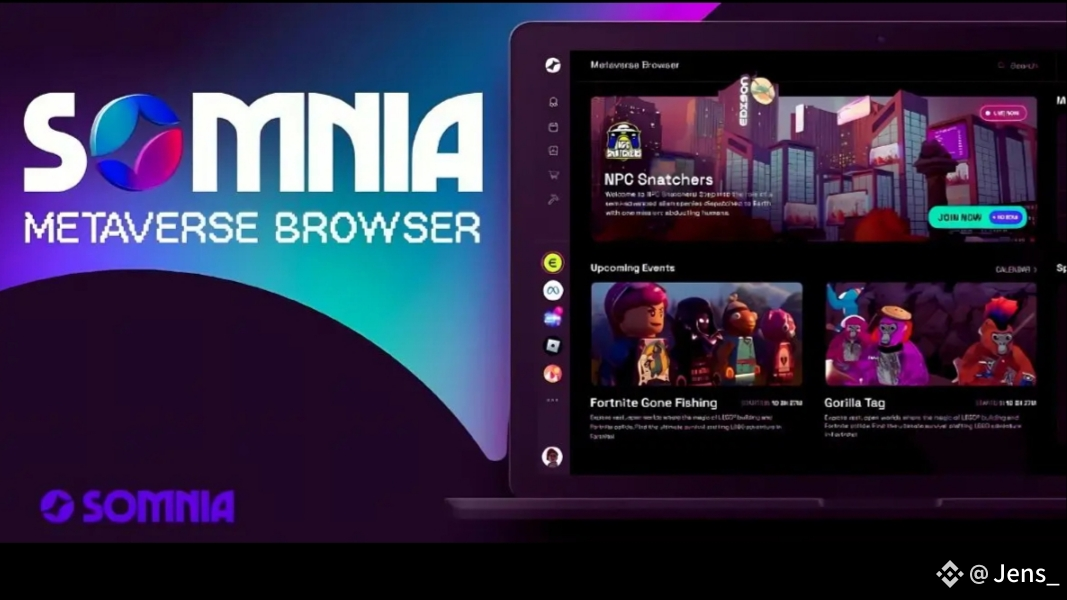Introduction
If you follow Web3, you’ve probably seen stories about layer-1 chains promising mass adoption and high performance. @Somnia Official is one of the rare ones that is now delivering. It just launched its mainnet, introduced its native token $SOMI, and during testnet phases it shattered records. For anyone interested in games, entertainment, and immersive apps built on blockchain, Somnia might be the one to watch.
What’s New with Somnia
Somnia officially launched mainnet and rolled out its SOMI token in early September 2025. During its six-month testnet phase the network processed over 10 billion transactions, onboarded more than 118 million unique wallet addresses, and partnered with over 70 ecosystem projects.
The testnet achievements include 1.9 billion transactions processed in a single day, which is a record for EVM-compatible blockchains. Also, one game called Chunked alone did 250 million transactions over five days.
Somnia offers over one million transactions per second throughput, sub-second finality, very low fees even under high load, and supports persistent digital identity.
Infrastructure partnerships include Google Cloud as one of the validators, and integrations with LayerZero, Sequence, Ankr, DIA, Thirdweb.
The ecosystem is expanding fast. There are over 70 active projects at launch such as Variance, Maelstrom, ForU AI, Quills, Sparkball and many more. Also, there is a $10 million grant program and an accelerator called Dream Catalyst to support teams building in gaming, DeFi, AI, SocialFi.
Somnia has raised about $270 million from major backers like Improbable, MSquared and others, which gives it strong financial backing to build its infrastructure and ecosystem.
Use Cases: Where Somnia Makes an Impact
Fully On-chain Games with Real-Time Interaction
Games that require instant feedback and responsive world events benefit from Somnia’s sub-second finality. Seeds like Sparkball, which features team battles, AI-versus-AI leagues, and on-chain rewards tracking, are already built to take advantage of this.
Massive NFT & Metaverse Projects
Because Somnia can handle very high transaction throughput and low latency, it is suitable for virtual worlds where users mint or transfer NFTs, move assets across ecosystems, or engage in social metaverse experiences. Tools like MSquared and Playground are examples.
User-Friendly Onboarding for Consumer Apps
With partnerships like Sequence, which provides smart wallet tools and SDKs, game developers and entertainment creators can build apps where users do not need deep Web3 knowledge. That lowers friction and helps adoption.
Governance, Ecosystem Incentives, and Grants
$SOMI token is central to gas/fee payments, validator rewards, and ecosystem incentives. The grant programs and accelerators help new teams launch projects, often with support, mentorship, and funding.
Why It Matters
Many blockchains claim to target gaming and entertainment, but only a few combine scale, speed, and usability. Somnia is aiming to cross that bridge. Because it is EVM-compatible, developers familiar with Ethereum tooling can port or start projects without relearning everything. With high transaction capacity, low fees, and real partners backing them, Somnia is well positioned to support large audiences. For players and creators this means experiences that feel smooth, real, and impactful rather than laggy or expensive.
FAQs
What is $SOMI used for?
SOMI is the native currency on Somnia. It pays for transaction fees, rewards validators for securing the network, and works as part of the governance and incentive system for ecosystem builders.
How fast and cheap is Somnia compared to others?
Somnia claims more than one million transactions per second throughput, sub-second finality, very low fees even under high load. During testnet, it processed 1.9 billion transactions in a day.
Is it live now for developers and users?
Yes. Mainnet is live since early September 2025. Developers can build on it, applications are launching, grants are available, and ecosystem partners are integrating.
What kinds of apps does Somnia support best?
Somnia supports games, AI & agent-based applications, metaverse & virtual worlds, social platforms, DeFi and NFT projects. Any app where speed, responsiveness, scalability and low cost matter will benefit.
Who is behind Somnia and do they have strong backing?
Somnia is built by Improbable in partnership with the Somnia Foundation (Virtual Society Foundation). Backed by investors like MSquared and others, it has raised about $270 million. Major infrastructure partners like Google Cloud are validators.
Conclusion
Somnia is not just another layer-1 promising future features. It has now crossed into delivery mode. With mainnet live, token launched, ecosystem growing and strong infrastructure in place, Somnia is making good on its promises. For gamers, creators, and developers focused on mass-consumer applications, it is offering something tangible. If you care about scale, speed, low cost, and real user experience in Web3 games and entertainment, then Somnia is definitely one to keep your eyes on.

